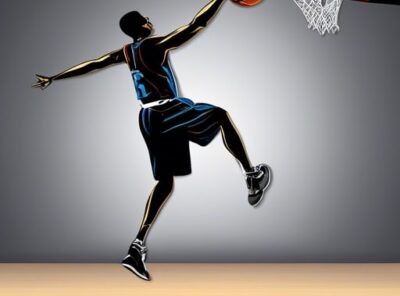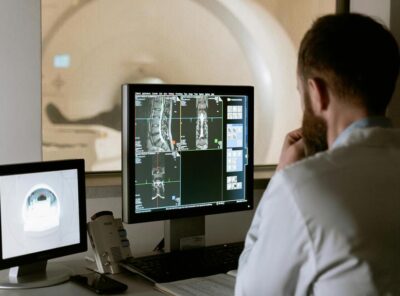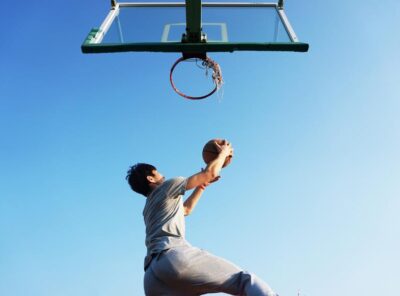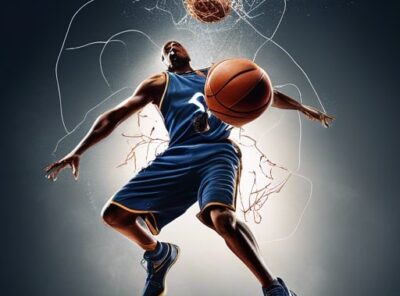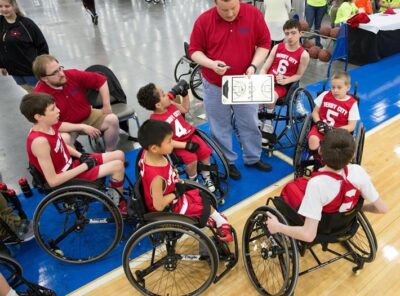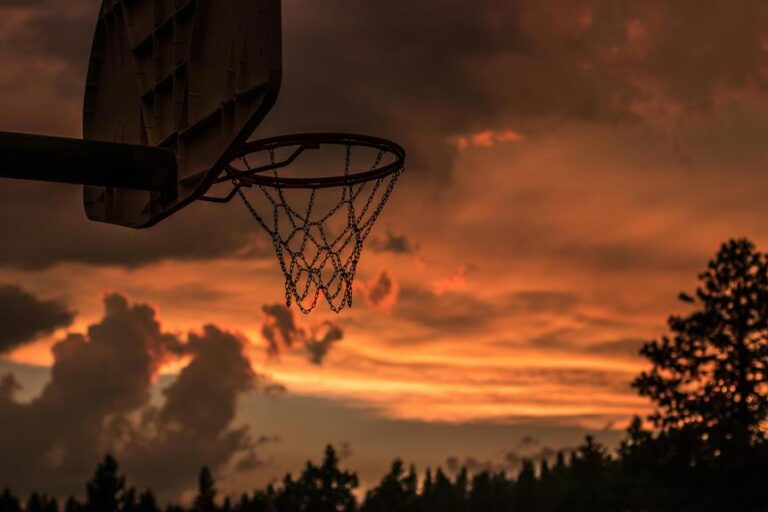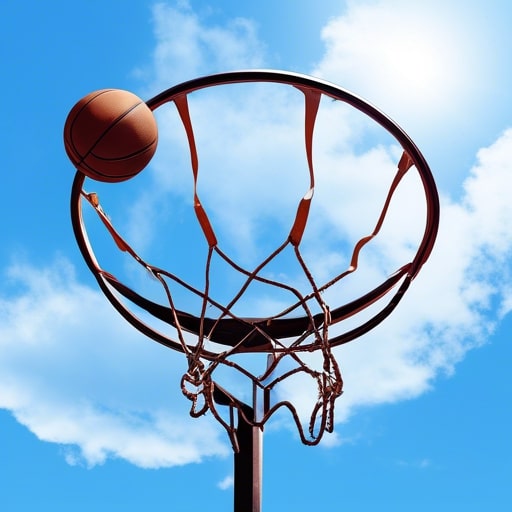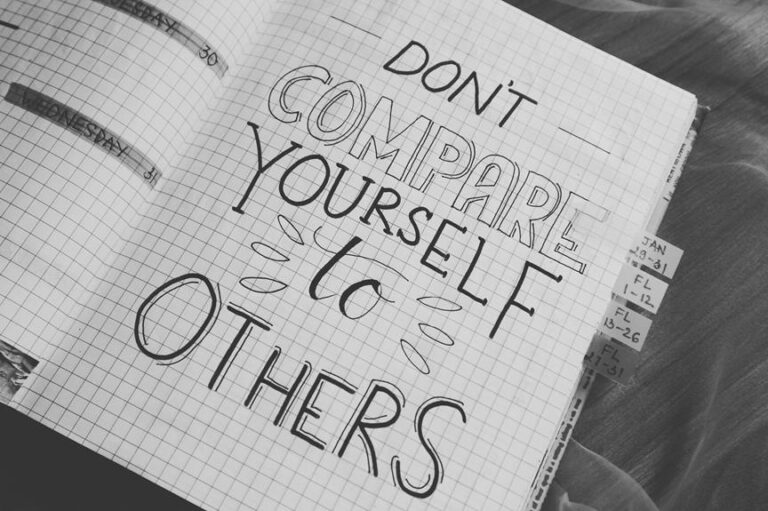Why Does My Back Hurt After Playing Basketball?
After a game of basketball, your back may hurt because of the strain caused by jumping, twisting, and sudden stops during play. The repetitive bending and reaching also lead to muscle fatigue and back pain.
Additionally, the impact from jumping and quick changes in direction stress your back muscles and joints. If you want to learn more about how to prevent and manage back pain after basketball games, keep exploring the factors that contribute to this discomfort for a healthier gameplay experience.
Key Takeaways
- Basketball movements strain lower back muscles and spine.
- Impact from jumps and sudden stops causes discomfort.
- Hyperextension during play can lead to acute back pain.
- Stress fractures and herniated discs are common back injuries.
- Core strength, proper warm-up, and footwear are crucial.
Impact of Basketball Movements on Back
Playing basketball can strain your lower back due to movements like jumping, twisting, and sudden stops. The repetitive bending and reaching involved in basketball can lead to muscle fatigue and back pain. Additionally, the impact of landing from jumps can compress the spine, resulting in discomfort in your back.
Quick changes in direction during basketball games can stress the back muscles and joints, making them more prone to injuries.
The dynamic nature of basketball movements can exacerbate existing back issues or cause new injuries, especially if important warm-up and stretching routines aren’t followed.
To prevent basketball-related back injuries, it’s vital to focus on strengthening your core muscles, maintaining proper posture, and incorporating flexibility exercises into your routine.
Stress Fractures and Herniated Discs
Stress fractures and herniated discs can have debilitating effects on basketball players, often stemming from the repetitive and high-impact nature of the sport.
Here are some key points to think about:
- Stress Fractures: These can develop from the constant pounding on hard surfaces during gameplay, leading to tiny cracks in the bones of the back. Activities like jumping, running, and pivoting may worsen the pain associated with stress fractures.
- Herniated Discs: Excessive twisting, bending, or sudden jerking motions can cause the discs in the spine to bulge or rupture. Symptoms often include sharp pain, numbness, tingling, or weakness in the lower back, buttocks, or legs.
- Impact on Players: If left untreated, both stress fractures and herniated discs can significantly sideline players, emphasizing the importance of prompt diagnosis and proper treatment.
Hyperextension Risks in Athletes
Hyperextending your back while engaging in basketball activities can put undue strain on your spine and surrounding tissues.
Athletes often hyperextend their backs while jumping, pivoting, or reaching during play, which can lead to increased stress on the lower back muscles, ligaments, and discs. This excessive hyperextension can result in acute or chronic lower back pain, increasing the risk of back injury among athletes.
To help prevent these issues, it is crucial to focus on proper training techniques that promote core strength, flexibility, and body awareness.
By incorporating these elements into your basketball routine, you can reduce the likelihood of experiencing hyperextension-related back problems, allowing you to enjoy the game while keeping your back healthy and strong.
Risks of Hyperextension in Athletes
- Increased stress on spine and surrounding tissues
- Strain on lower back muscles, ligaments, and discs
- Higher risk of acute or chronic lower back pain
Symptoms of Lower Back Pain
Experiencing lower back pain after playing basketball often presents itself as a dull ache or sharp discomfort in your lumbar region. Symptoms may include stiffness, muscle spasms, and difficulty bending or moving the back comfortably.
This type of pain often worsens with movements like bending over, jumping, or twisting during basketball activities. If left untreated, basketball-related lower back pain can have a notable impact on your daily activities and athletic performance.
It’s essential to pay attention to these symptoms as they could indicate underlying issues that need to be addressed.
Seeking medical evaluation promptly for persistent low back pain, especially if accompanied by muscle spasms, can help in identifying the root cause and finding effective treatment options.
Orthopedic Spine Specialist Consultation
When seeking relief for your basketball-related back pain, consulting with an orthopedic spine specialist can provide a thorough evaluation and personalized treatment plan. Orthopedic spine specialists have specialized training in back injuries, allowing them to diagnose and treat your condition effectively.
By consulting with an orthopedic spine specialist, you can expect a detailed assessment of your back pain, leading to a tailored treatment plan designed specifically for your needs. These specialists utilize advanced imaging techniques such as MRI and CT scans to accurately identify the root cause of your discomfort.
Expert guidance from an orthopedic spine specialist will help you understand the extent of your injury and determine the best course of action for your recovery.
Diagnostic Tests for Back Injuries
To accurately diagnose back injuries in basketball players, diagnostic tests such as MRI scans are commonly used to evaluate soft tissue damage.
These tests can provide detailed insights into the extent of injury and guide treatment plans effectively. Here are three essential diagnostic tests for back injuries:
- X-rays: Helpful in identifying fractures or abnormalities in the bony structures of the spine.
- CT scans: Provide thorough evaluations by offering detailed images of the spine and surrounding structures.
- EMG tests: Used to assess nerve function and identify any nerve-related issues contributing to back pain.
These diagnostic tools, combined with physical examinations by orthopedic specialists, play a significant role in accurately diagnosing and treating lower back pain in basketball players.
Defining and Treating Back Injuries
Back injuries in basketball players necessitate immediate identification and targeted treatment to ensure efficient recovery and prevent long-term complications.
Common injuries such as stress fractures and herniated discs can lead to lower back pain during specific movements.
If you experience lower back pain after playing basketball, it’s vital to seek help from an orthopedic spine specialist. These specialists can provide a proper diagnosis and create a tailored treatment plan to address your specific injury.
Rest and rehabilitation are essential components of the recovery process. By following the specialist’s guidance and engaging in the prescribed treatment plan, you can increase your chances of a successful recovery and minimize the risk of future complications.
Sustainable Recovery Strategies
After identifying the specific back injury from playing basketball, sustainable recovery strategies become paramount for long-term healing and prevention of future complications.
To effectively address lower back pain and optimize your recovery process, consider the following strategies:
- Rest and Rehabilitation: Allow your back time to heal by incorporating rest periods into your routine. Additionally, engaging in targeted rehabilitation exercises can strengthen the muscles supporting your back, aiding in recovery.
- Tailored Treatment Plans: Consult with orthopedic spine specialists to develop personalized treatment plans tailored to your specific condition. Their expertise can guide you towards the most effective recovery strategies.
- Understanding Underlying Causes: Gain insight into the root causes of your back pain to implement long-term management strategies. By addressing the underlying issues, you can work towards sustainable recovery and prevention of future complications.
Preventing Recurrence of Back Pain
Engage in regular core strengthening exercises to support your spine and effectively prevent the recurrence of lower back pain. Strengthening your core muscles, including the abdominals and back muscles, helps stabilize your spine, reducing the risk of injuries and discomfort.
Maintaining significant posture while playing basketball is pivotal to lessen strain on your back muscles. Remember to warm up before starting your game and cool down afterward to prepare and recover your muscles adequately.
Using appropriate footwear with good cushioning and support can also minimize the impact on your back during basketball activities.
Stay hydrated and focus on overall fitness to improve muscle function, reducing the chances of experiencing back pain while playing basketball.
Consistency in these practices will aid in preventing future episodes of back pain.
Frequently Asked Questions
Why Does My Back Hurt From Basketball?
Your back hurts from basketball due to repetitive movements, high-impact activities, and strain on lower back muscles. Jumping, running, and sudden stops stress the spine. Improve technique, conditioning, and warm-up to reduce risk and pain.
Why Does My Back Hurt After Playing?
When your back hurts after playing, listen to your body. It may signal strain from intense movements. Prioritize rest, gentle stretches, and proper post-game care. Ignoring pain risks further injury. Take care of yourself for long-term play.
Does Basketball Strengthen Your Back?
Playing basketball does strengthen your back. Engaging core muscles in movements like dribbling and jumping helps build muscle and support spinal health. Consistent play can enhance posture and stability, contributing to overall back strength.
Do Basketball Players Have Bad Backs?
You might wonder, “Do basketball players have bad backs?” Well, statistics show that 20% of basketball athletes experience back pain. Remember to stretch, strengthen your core, and listen to your body to prevent such issues.
Conclusion
So, next time you hit the court, remember to be mindful of your back health. Just like a well-oiled machine, your body needs proper care and maintenance to keep running smoothly.
Don’t let back pain be the thorn in your side when shooting hoops. Take care of your body, listen to any warning signs it gives you, and keep on playing the game you love.
Your back will thank you for it in the long run.

